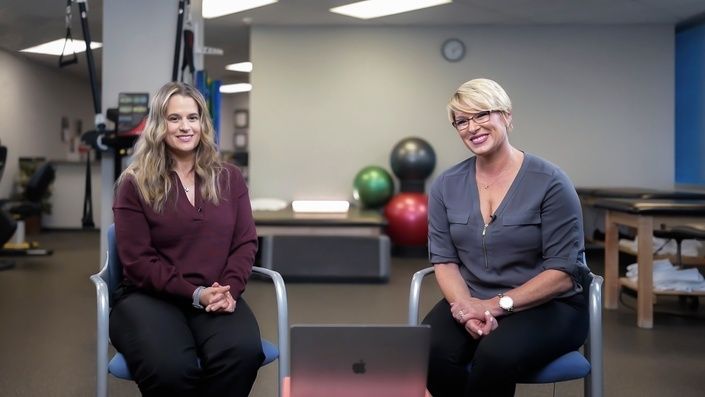Introduction
The Chronic Neck Pain Masterclass, taught by Karen Litzy and Secili DeStefano, provides acomplete overview of the assessment and management of Chronic Neck Pain. This positionstatement provides clinically relevant, actionable information that may be useful to healthprofessionals.
Part 1 - Understanding Chronic Neck Pain
There is a global burden of neck pain and affects more women than men. Pain is multifactorial,a personal experience and does not always equal tissue damage. There are different painterminologies ranging from nociceptive, neuropathic, nociplastic and/or neurogenic. Riskfactors for developing chronic pain include genetic factors, female gender, lifestyle,psychosocial factors, history of trauma, work type and/or opioid use.
- As clinicians, avoid putting your own biases onto the patient, because pain is a personalexperience and is relative to each individual.
- It is important to remember to treat the patient and not their scan, as the scan doesn’talways correlate to patient symptoms.
Part 2 - Subjective Assessment & Biochemistry
The overall evaluation for chronic neck pain includes motivational interviewing during thesubjective assessment as well as screening for red flags. The biochemistry of the patient shouldbe considered as hormone levels may impact the patient’s symptoms and how you may referto other health professionals for a holistic approach.
- Affirming patients is an effective tool for building rapport and is important for buildingtherapeutic alliances.
- Wearables can be used to track heart rate, sleep, static/active minutes and step amount.
- Be aware of the patient’s autonomic nervous system responses, as it can help clinicianstailor their treatment approach and to build trust.
Masterclass Preview
Have a sneak peak at some of the physical tests Karen & Secili use in their objective assessment.
Part 3 - Biomechanics & Physical Tests
The objective examination can include testing range of motion, performing a neurological screen, sensory tests, palpation and a mobility screen. It is important to assess the overall capacity to perform the tasks relating to their goals, as well as asking about their modifiable factors including sleep, stress management, nutrition, social support and weight management.
- During the neurological screen, if the patient has a ‘zero’ grade muscle contraction, refer to their doctor promptly.
- For the deep neck flexor endurance test, ask the patient to do a chin tuck before lifting the head in an attempt to minimise sternocleidomastoid involvement.
Part 4 - Patient Care
The treatment plan should be patient-centered and tailored individually according to the patient’s goals. The treatment can include creative strengthening exercises, blood flow restriction and graded motor exposure. Overall, it is crucial to build trust with the patient and learn how to work with other health professionals to improve patient outcomes.
- If the patient is unable to rotate their neck out of fear/pain, they can rotate their body whilst keeping their neck fixed in one position to expose their neck to rotation in a close-packed position.
- Recognise what the DIMs (perceived dangers) and SIMs (perceived safety) in the patient are to better individualise their care.



